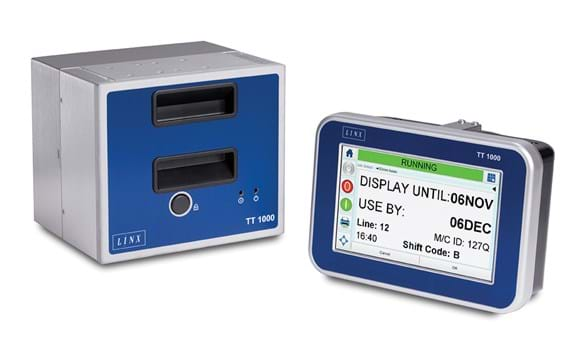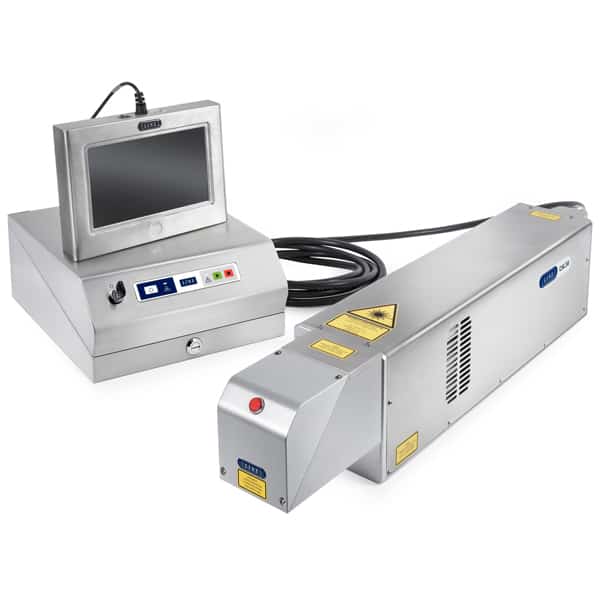printing with food grade ink
Coding and marking food products with food-grade ink indeed became important in the competitive food industry. Ensuring compliance with regulatory standards as well as delivering trustworthy product information to discerning consumers. Likewise, From food packaging printing to condiments coding and marking, there are various solutions available in the market. Inkjet coding in the food industry became necessary due to the requirement of the expiry date, lot codes, and Julian code on food. So, when looking for a coding and marking system for your food products, make sure to invest in a reliable food-grade inkjet coding printer that can produce durable and legible codes while also adhering to industry standards.
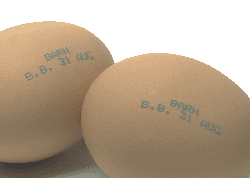
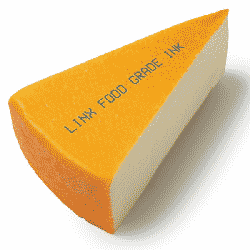
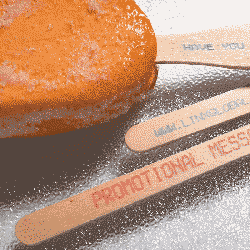
Inkjet Date Coding Printers for Food
Linx offers a variety of specialist inks, ranging from plastic adherent to low-odor and food-grade inks. These inks are compatible with a wide range of materials and printing surfaces, and the associated consumables are cost-efficient and competitive. Therefore, Linx printing solutions are an ideal choice for coding on a complete range of packaging materials, including plastics, cardboard, paper labels, and even directly on food products.

Food Grade Ink
Linx inkjet coding and marking printers are the perfect solution for printing on snack food packaging, including expiry dates, frozen food packaging, and plastic materials. These printers allow for printing batch codes, expiration dates, manufacture dates, and even QR codes and barcodes. Choose from various products, including Continuous Inkjet Printers (CIJ), Thermal Transfer Overprinters (TTO), Laser Coders, and Large Character Printers. Linx Authorized Distributor support in UAE, with the added perks of 24/7 emergency service, maintenance contracts, free delivery, high quality, and competitive prices.
printing with food grade ink
Linx Printing Technology explicitly provides versatile food-grade inkjet printers for the food industry. High quality and error-free coding of both primary and secondary packaging are essential to protecting the brand and ensuring product longevity. Furthermore, Linx’s IP-rated printers are resistant to harsh environments and increase productivity with maximized uptime. Incorporating Linx’s reliable coding solutions can significantly benefit your overall production efficiency.
Julian Code on Food
Julian code is a date coding system used in the food industry to indicate the manufacturing date of products. The Julian code consists of a series of numbers representing the manufacturing day and year of the product.
The Julian code consists of a three-digit number, with the first digit representing the last digit of the year and the next two digits representing the day of the year. For example, a product manufactured on January 1st, 2022, will have the Julian code “00122”.

Using Julian code on food products offers several benefits to both food manufacturers and consumers, including:
- Consistent labeling: Julian code provides a consistent and standardized method of printing with food-grade ink. This helps to ensure that the information is clear and easy to understand for consumers.
- Effective inventory control: Julian code enables food manufacturers to track the age of their products and manage inventory more effectively. This helps to reduce waste and ensure the selling of products before they expire.
- Improved food safety: By indicating the manufacturing date of a product, Julian code helps to ensure that consumers can identify and avoid expired or spoiled products. This helps to reduce the risk of foodborne illness and improve overall food safety.
- Regulatory compliance: Many regulatory agencies require food manufacturers to label their products with the manufacturing date using a standardized format such as Julian code. Complying with these regulations helps to ensure that products meet the required safety standards and avoid potential fines or penalties.
In summary, Julian code is a standardized date coding system used in the food industry to indicate the manufacturing date of products. Using this system provides consistent labeling, improves inventory control, enhances food safety, and ensures regulatory compliance.
Date Codes on Food
Date coding on food products is a standard practice in the food industry. Generally, it helps ensure that products are safe for consumption and compliant with regulatory requirements. Food-grade ink for printing information, such as expiration dates, lot numbers, or other vital details, on the packaging of food products. Here are some benefits of using food-grade ink for date coding:
- Safety: Food-grade ink is especially formulated for safe consumption in the food industry. These inks contain ingredients that comply with relevant regulations and do not contain harmful chemicals or contaminants.
- Legibility: Food-grade ink provides high-quality, legible printing that can withstand exposure to moisture, light, and other environmental factors. This ensures the information remains visible and accurate throughout the product’s shelf life.
- Versatility: Food-grade ink can utilization on a variety of packaging materials, including plastic, metal, and paper. This makes it a versatile option for food manufacturers using different packaging materials.
- Efficiency: Food-grade ink printers are fast and efficient, allowing for high-speed printing of large quantities of products. This helps to reduce labor costs and increase productivity.
- Compliance: Using food-grade ink for date coding ensures that food products are compliant with regulatory requirements. This helps to avoid potential fines or penalties and ensures that products are safe for consumption.

In summary, date coding on food products with food-grade ink offers several benefits, including safety, legibility, versatility, efficiency, and compliance. By selecting the correct ink and printer, food manufacturers ensure the accuracy of information on their products.


